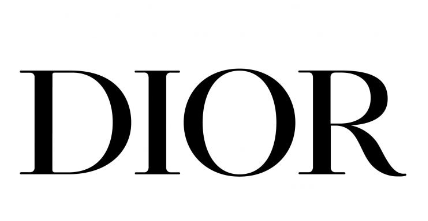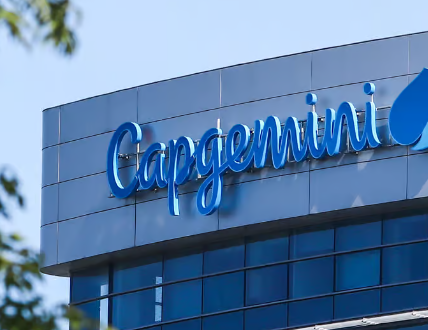
Adidas AG, headquartered in Herzogenaurach, Bavaria, Germany, is one of the world’s leading sportswear companies, renowned for its athletic apparel, footwear, and accessories. Founded by Adolf Dassler in 1949, the company has grown to become the largest sportswear manufacturer in Europe and the second-largest globally, following Nike. Adidas is also the holding company for the Adidas Group, which includes a stake in the football club Bayern Munich and the Austrian fitness technology firm Runtastic. With a 2018 revenue of €21.915 billion, Adidas’s success is rooted in innovation, quality, and a rich legacy.
The Early Days of Adidas: From a Laundry Room to a Global Brand
- Founded by Adolf “Adi” Dassler in Herzogenaurach, Germany, after World War I.
- His older brother Rudolf joined the company in 1924, and they named it “Dassler Brothers Shoe Factory.”
- Developed the first spiked running shoes with canvas and rubber to improve athletic performance.
- In 1936, U.S. sprinter Jesse Owens wore Dassler’s shoes and won four gold medals at the Olympics, bringing international recognition.
World War II and the Split Between the Dassler Brothers
The rise of the Dassler brothers, however, was not without challenges. Both Adolf and Rudolf Dassler joined the Nazi Party in 1933, and their factory was repurposed during the war to produce military footwear and anti-tank weapons. This caused a temporary halt to their athletic footwear production. In 1945, the factory was almost destroyed by U.S. forces, but it was spared when Adolf’s wife persuaded the American soldiers that their business focused on producing sports shoes.
The war and its aftermath strained the brothers’ relationship. By 1947, their differences led to an irrevocable split. Adolf Dassler registered his company as Adidas AG on August 18, 1949, combining his nickname “Adi” with the first part of his last name, while Rudolf Dassler formed Puma. The rivalry between Adidas and Puma became legendary, dividing the town of Herzogenaurach and even affecting local football clubs, which were split in allegiance to the two brands.
The Adidas Brand and Innovation

Adidas’s iconic three-stripe logo became synonymous with the brand’s identity in 1952, when Dassler acquired it from Finnish company Karhu Sports for just €1,600 and two bottles of whiskey. The three stripes, which initially served as a functional design element to stabilize the shoe, soon became a powerful marketing tool. Dassler’s commitment to quality footwear paid off, and by the 1950s, Adidas was a recognized name in sports apparel worldwide.
The 1960s saw Adidas further expand its global reach, particularly in football and athletics. At the 1960 Summer Olympics, Adidas sponsored German sprinter Armin Hary, who wore their shoes to win gold. The 1970 FIFA World Cup also saw Adidas become synonymous with football, as it provided the official match ball, the Telstar, which featured the brand’s iconic three-stripe design.
The Rivalry with Puma and the ‘Pelé Pact’
The competition between Adidas and Puma was fierce, with both companies competing to sign the world’s top athletes. One of the most notable events in the rivalry was the “Pelé Pact” of 1970, when the two brothers agreed not to compete for the sponsorship of Pelé, the most famous football player in the world at the time. However, Puma broke the pact and signed Pelé, leading to even greater animosity between the two companies. This rivalry, however, helped propel both Adidas and Puma to international success, transforming the sportswear industry into a multi-billion-dollar business.
Adidas’s Growth and Strategic Acquisitions
In the 1990s, Adidas faced financial challenges but experienced a resurgence under new leadership. In 1990, French businessman Bernard Tapie acquired the company, taking it to new global markets and shifting some production to Asia. However, by 1992, Tapie was forced to sell the company due to financial troubles. Robert Louis-Dreyfus, a friend of Tapie, became CEO of Adidas in 1994 and led the company to a dramatic turnaround.
Adidas’s acquisition of the Salomon Group in 1997, which included TaylorMade and Maxfli, allowed the company to expand into the golf market. In 2005, Adidas purchased Reebok for $3.8 billion, further solidifying its position as a global player in sportswear and providing direct competition to Nike in North America.
Adidas in the 21st Century: Innovation and Collaborations
Adidas continued to innovate in the 2000s, introducing cutting-edge technology in sports footwear and apparel. One of the most notable innovations was the Adidas 1 shoe, released in 2005, which featured a microprocessor capable of adjusting the shoe’s cushioning automatically. This marked the first-ever intelligent shoe and showcased Adidas’s commitment to performance-driven design.
In the same period, Adidas expanded into fashion with the launch of the Adidas by Stella McCartney line, blending performance with high-end fashion. The partnership, which began in 2004, established Adidas as a brand not only for athletes but also for fashion-conscious consumers.
Adidas Today: A Global Leader in Sportswear and Fashion
Today, Adidas is not just a sportswear company but a global lifestyle brand. With its cutting-edge technology, eco-conscious initiatives, and high-profile collaborations with designers, athletes, and entertainers, Adidas has maintained its position as a leader in the athletic wear industry. The brand’s dedication to sustainability, combined with its continued innovation, ensures that Adidas remains a dominant force in both sports and fashion.
Through its commitment to quality and performance, Adidas has not only shaped the world of sports but also the world of fashion. With collaborations featuring celebrities like Kanye West and Pharrell Williams, Adidas has redefined the boundaries between performance and style, making it a brand that appeals to both athletes and fashion enthusiasts alike.
Key Milestones in Adidas’s Journey
- 1924: Adolf Dassler and his brother Rudolf establish “Gebrüder Dassler Schuhfabrik.”
- 1936: Jesse Owens wins four gold medals at the Berlin Olympics, wearing Adidas shoes.
- 1949: Adidas is founded by Adolf Dassler after splitting with his brother, Rudolf.
- 1952: Acquisition of the three-stripe logo from Karhu Sports.
- 1960s-70s: Adidas becomes a global powerhouse, sponsoring athletes and providing equipment for major events like the FIFA World Cup.
- 1990s: Adidas acquires the Salomon Group and Reebok, expanding into new markets.
- 2005: Adidas introduces the Adidas 1 shoe, the first intelligent shoe with an adjustable microprocessor.
- 2010s-2020s: The company continues to innovate and collaborate with high-profile figures, solidifying its place in both sports and fashion industries.
Adidas’s rich history and unwavering commitment to innovation have made it one of the most influential and recognizable brands in the world, influencing generations of athletes and consumers alike.





